Croatian Naïve art
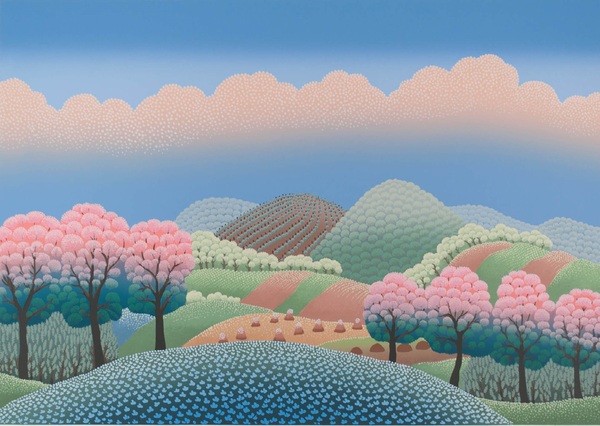
지난해 50만 명의 한국 관광객이 크로아티아를 방문하면서 크로아티아 와인, 국립공원과 유네스코 문화유산에 대해 한국인들이 자연스럽게 많이 접하게 되었다. 이번에 크로아티아의 순수한 아름다움을 예술로 표현하고 또 다른 관점에서 이해할 수 있는 ‘나이브 아트’에 관해 소개하고자 한다.
20세기 서양예술이 점차 제도화되고 학문적으로 발전해나가는 동안 크로아티아의 작은 시골 마을 흘레비네(Hlebine)에서 미술 전문교육에 의하지 않고도 자신만의 독특한 스타일을 개발해낸 예술가들의 활동이 시작되었다. 1931년 9월 13일 자그레브 아트 파빌리온(Zagreb Art Pavilion) 기간 중 예술가협회 전시회 ‘Country(Zemlja)’에서 ‘나이브 아트’가 처음으로 선보였다.
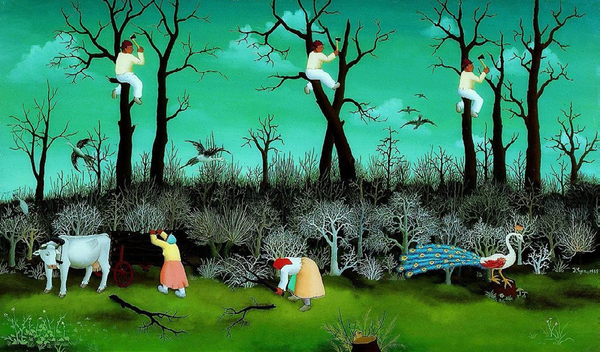
‘나이브 아트’는1930년 이미 유명했던 예술가 크르스토 헤게두쉬치(Krsto Hegedušić)가 여름을 보내고자 고향 흘레비네를 찾고 그곳에서 16세 소년 이반 게네랄리츠(Ivan Generalić)를 만나면서 태동하게 되었다. 헤게두쉬치는 게네랄리츠의 천재적인 자질을 한 눈에 알아보았다. 그는 마을 울타리에 숯으로 그림을 그리고, 종이 봉지에 색깔을 칠하고, 나무 막대기로 흙에 이미지를 새기는 게네랄리츠의 순수한 창작 활동을 보고 예술인으로서 스승과 제자, 예술인 친구로 인연을 맺어갔다.
헤게두쉬치는 게네랄리츠에게 마을의 일상적인 생활을 아름답게 꾸미도록 영감을 주고, 그의 자유로운 창의적 상상이 독창적인 스타일을 이루도록 이끌었다. 게네랄리츠는 인상적인 색상, 비정형적인 관점, 감정이 깃든 콘텐츠를 사용함으로 빠르게 세계적인 명성을 얻었다.
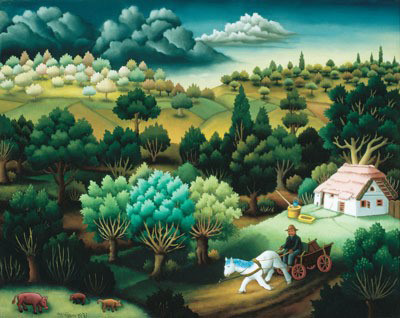
크로아티아에서 ‘나이브 아트’는 미술 전문교육을 받지 않고도 누구든지 가치 있는 예술을 창작할 수 있음을 보여주어 ‘예술의 민중운동’이라 칭한다. 이러한 감동적인 예술 ‘나이브 아트’는 지배자적인 논리나 이성보다 시골이나 도시, 목가적, 정치적 주제를 포함해 ‘인생의 기쁨’, ‘자연과의 교감’, ‘지난 어린 시절’, ‘동네의 재미난 일’ 등 일상적인 소재를 다룬다는 특징이 있다. ‘나이브 아트’에서는 삶의 긍정적인 면뿐만 아니라 또한 어둡고 비극적인 주제도 찾아볼 수 있다.
크로아티아 자그레브 ‘나이브 미술관’은 세계 최초의 나이브 미술관으로서 1,850종 이상의 그림, 조각 및 인쇄물을 보유하고 있다.
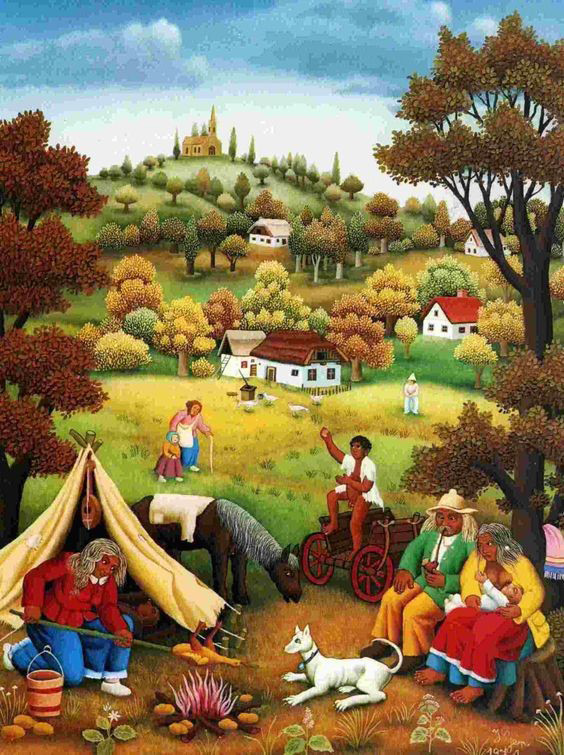
Croatian Naïve art
After a half million Korean tourists visited Croatia last year, Croatian wine, National Parks and UNESCO cultuarl heritages were well introduced among oKreans. I would like to introduce Croatian Naïve art which expresses the pure beauty of Croatia and Croatian landscapes into Art.
As the 20th century approached, Western art became deliberately more formalized and institutionalized, a new movement arose that the artists developed their own unique styles without proper art education. Naïve art first appeared in Croatia at the beginning of the 1930s when the Zagreb Art Pavilion showcased an exhibition of the artists' association entitled Country (Zemlja) on 13 September 1931.
A well-known artist Krsto Hegedušić spent summers in Hlebine, Croatia, his hometown in 1930, and the naïve art started when he made a fate encounter with a sixteen-year-old boy. Ivan Generalić (1914-1992) painted on village fences with charcoal, drew on paper bags and etched in the dirt with wooden sticks, and Hegedušić recognized his talent. Hegedušić and Generalić had a life-long relationship not only as master and his apprentice but also as companion to art.
The Master helped his disciple be inspired by ordinary village life and events and led his free creative imagination into a unique and surrealist style as it might be seen in his famous painting Cows under the Eiffel Tower. He was able to use striking colors, atypical perspectives, unreal elements and various contents with emotion which made him to be globally recognized.
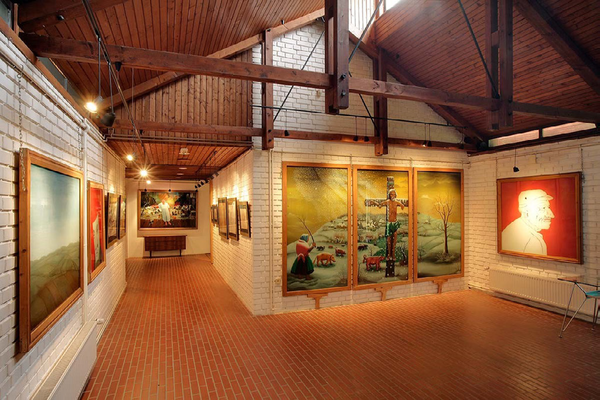
Among the best known Croatian Naive Art painters are Ivan Lacković Croata with his unique sunlight scenes and distinctive, melancholic and romantic landscapes, and Ivan Rabuzin by his lyricism with systematic abstraction and stylisation, and who created the design for the grand curtain of the Takarazuka Theatre in Tokyo in 1980; and in 1983 he made a tapestry for the Saitama Museum of Modern Art, Urawa in Japan.
Naïve art can be considered as a democratic movement of art since it proves that anyone becomes painters and sculptors without obtaining their systematic training in art. Within these Naïve art, various emotive qualities are often more visible than any logical form. Common themes include: "the joy of life," "interaction with nature," "past childhood," and "wonder at the world." However, Naïve art does not only reflect positive aspects of life, but also dark and tragic themes. The Croatian Museum of Naïve art in Zagreb in considered the first museum in the world dedicated to Naïve art and holds more than 1,850 works of paintings. sculprteu and printings.
글 | 순영 레든 Soonyoung Redden
한.크로아티아 협회 사무총장, 크로아티아 문화 여행 전문가

